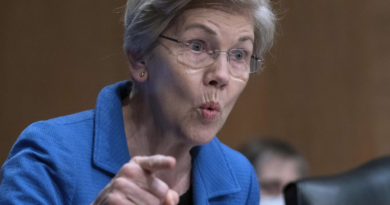'Systemic risk exception' invoked to fully protect all Silicon Valley Bank depositors, Fed rolls out new backstop for banking sector
The Federal Deposit Insurance Corporation (FDIC) will address the Silicon Valley Bank failure in a way that “fully protects all depositors, both insured and uninsured,” the Federal Reserve announced on March 12th. In a separate statement issued jointly by the Fed, FDIC and Treasury Department, the regulators explained that a “systemic risk exception” was being invoked for SVB and another lender that failed over the weekend, New York-based Signature Bank, so that all depositors would be made whole without any losses to taxpayers.
The actions to protect SVB depositors will not extend to shareholders and certain unsecured debtholders, the regulators said, while senior management has been removed. Any losses to the federal Deposit Insurance Fund, which will pay out uninsured depositors, will be recovered by a special assessment on banks, a current aspect of federal law.
The decision comes after a weekend of debate about whether the FDIC would go beyond the $250,000 insurance limit for deposits, with much of the claims at SVB, the second-largest bank failure in U.S. history with about $220 billion in assets, being uninsured.
The decision was made by Treasury Secretary Janet Yellen after recommendations from the boards of the FDIC and the Federal Reserve, and after a consultation with President Joe Biden, according to the statement. This will “reduce stress across the financial system, support financial stability and minimize any impact on businesses, households, taxpayers, and the broader economy,” the statement added.
The central bank also announced that it will make more funding available to other banks to help assure they can meet the needs of all depositors, as the fear of contagion has swirled, especially for large regional lenders similar to SVB, although it was considered a unique lender with a unique kind of failure. Seeking to calm a potential market panic this coming Monday, the Fed said it was “prepared to address any liquidity pressures that may arise.” Around 6:00 pm ET on Sunday, shortly before the Fed released its statement, stock futures opened higher, indicating relative market calm or even optimism.
Bloomberg reported on Saturday evening that FDIC regulators estimated just 30% to 50% of uninsured deposits would be available on Monday morning and the FDIC was preparing for a potentially lengthy sale process of SVB assets. The Fed’s statement did not comment on the SVB auction process being held by the FDIC, which Bloomberg reported began on Saturday night, with final bids expected on Sunday afternoon.
The Fed will make this financing available through a new program, called the Bank Term Funding Program (BTFP), that will offer loans up to one year long to banks as well as savings associations, credit unions, and other eligible depository institutions that are “pledging U.S. Treasuries, agency debt and mortgage-backed securities, and other qualifying assets as collateral.” The BTFP is intended to offer such banks and lenders another source of liquidity and so eliminate the need to quickly sell those securities, as SVB did shortly before its demise.
Treasury Secretary Yellen will make up to $25 billion available as a backstop for this BTFP, but the Fed said it does not think it will have to draw on those funds.
This announcement confirmed reports that the Fed was considering allowing easier access for banks to its “discount window,” which has two lending programs in the form of a primary credit program, for healthy banks to get loans at a slight penalty to their overnight lending rate, and the secondary credit program for more troubled banks, with higher penalty rates and shorter-termed loans. Unlike either of those programs, though, the BTFP will value those assets at par (i.e., with no penalty).
Seeking to further calm markets, the Fed said it was “carefully monitoring developments in financial markets” and “closely monitoring conditions across the financial system.” It said the banking system’s capital and liquidity positions are strong and the U.S. financial system is resilient, but added that it was “prepared to use its full range of tools to support households and businesses, and will take additional steps as appropriate.”
Fortune‘s CFO Daily newsletter is the must-read analysis every finance professional needs to get ahead. Sign up today.


